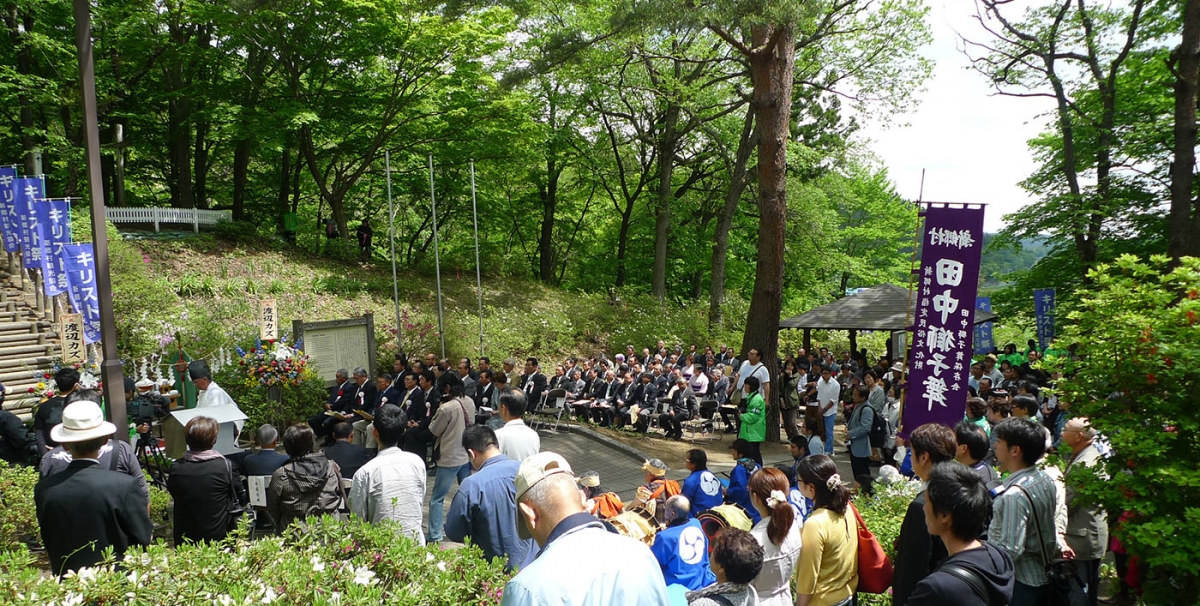Authentic fakes: the case of the Tomb of Christ in Japan
<p>As a representative example of a tourist site that is obviously unauthentic, the case of the Tomb of Christ [<em>Kirisuto no haka</em>] in Shingō Village (新郷村) of Sonnahoe District (三戸郡) located in the south of Aomori Prefecture (青森県) in Japan offers a new perspective on ‘contents tourism’ (also known as media-induced tourism). Positioned roughly 30 km to the west of an important regional center, Hachinohe City (八戸市), Shingō Village stretches along the country road connecting Hachinohe with Lake Towada (十和田湖). Its population has been shrinking since the 1970s, with the current number of residents recorded at 2,679 (March 2016). And in this small village, a peculiar legend of Jesus has been handed down for generations.</p>
The legend has its roots in the Takenouchi Documents (竹内文書), one of the most famous hoaxes in the history of modern Japan. According to the legend, Jesus Christ returned to Judea to teach after spending his youth in Japan; he escaped persecution by fleeing back to Japan, where he lived until his death. The place where, the legend claims, he was buried gained the spotlight as a tourist attraction thanks to the Kirisuto Matsuri (Christ Festival, キリスト祭), a memorial service for Jesus Christ held on the first Sunday of June every year since 1964. Given that Shingō has fewer than 3,000 residents, it is remarkable that an estimated number of over ten thousand tourists, over 30% of whom are foreigners, visit the village every year. Most of the foreign tourists come to see the tomb, and their contribution to the local economy is significant.
Despite media attention for the tomb and its fame as a B-grade tourist spot, it has never been argued that the place is authentic. On the contrary, the majority of local residents and tourists recognize that the Tomb of Christ in Shingō is a fake. A large number of tourists visiting the tomb do so out of curiosity. They obtain information about the occult practice from the internet or magazines and come to the village to enjoy the forged nature of the tomb or the exoticism of the festival. Many want to experience the unique space created by the festival, regardless of the tomb’s authenticity, or lack thereof. There is, of course, a minority of tourists who believe that the legend is true.
In general, the authenticity of a tourist attraction is an important factor directly related to the site’s capacity to lure tourists. Because there is ‘something real that is worth seeing’, tourists flock even to difficult to reach places. Especially in the case of historical sites, to what extent the place has preserved its original appearance is important. Where repairs or maintenance has been performed, the key to preserving a site’s value is in meticulous scientific examination of its historical authenticity.
In contrast, the Tomb of Christ in Shingō has its very origins in a forged document, and therefore it could not claim any historical or scientific authenticity even from the very beginning. The fact that both the local residents and tourists are aware of this is particularly intriguing. There are instances where the Tomb of Christ has been mentioned in critical terms, as a suspicious fake tourist site or an evidence of mercantilism. However, this case demonstrates an example of the pursuit of a kind of authenticity distinct from traditionally accepted historical authenticity in the process of developing a tourist destination.
Instances of authenticity deriving from the fake and the consequent formation of the sense of community can be observed in other cases of modern tourist culture as well. Contents tourism, such as visiting movie sets and places appearing in animation films, has become a major object of investigation in tourism studies. Uno Tsunehiro (宇野常寛) defines contents tourism as an infusion of color into an ordinary space or an act of making a familiar living space a special one by fictionalizing a part of reality through the introduction of a forged history. Such a process of sanctifying an ordinary place based on a forged history took place in Shingō Village. In this light, the case of the Tomb of Christ in Japan can be seen as an example of thriving contents tourism and valuable material for the study of a new focus of modern tourism, festival events.
Ryusuke Okamoto, Professor at Hokkaido University (okamoto79@gmail.com).
This article is based on Ryosuke Okamoto. 2016. “Authentic Fakes, Diversification of Authenticity in Tourism Culture: The Case of the Tomb of Christ in Japan”, Asia Review 6(1):293-316, published by Seoul National University Asia Center.
